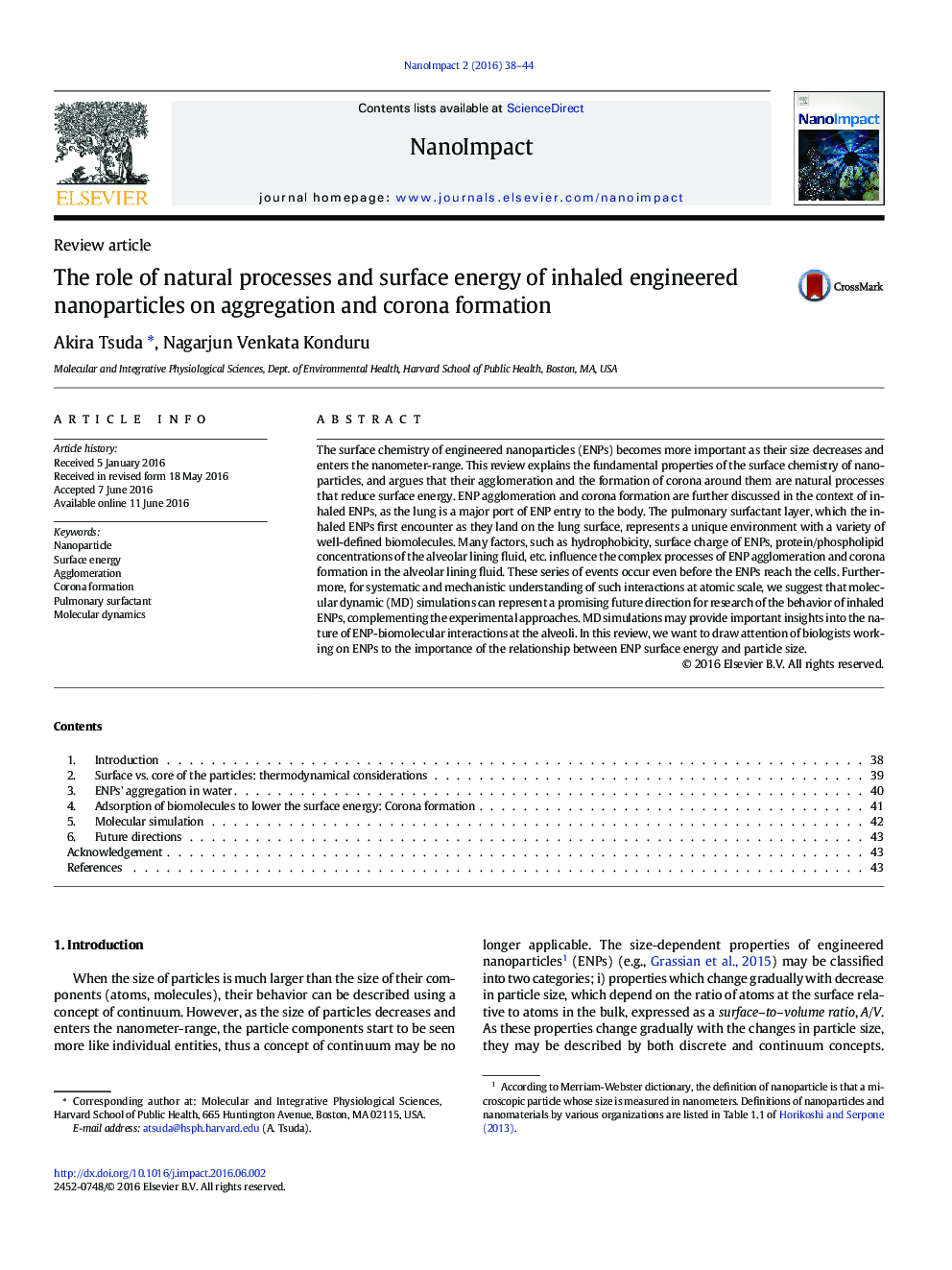| Article ID | Journal | Published Year | Pages | File Type |
|---|---|---|---|---|
| 5854641 | NanoImpact | 2016 | 7 Pages |
â¢The surface chemistry of engineered nanoparticles becomes more crucial as their size decreasesâ¢The agglomeration of engineered nanoparticles reduces the surface energyâ¢The formation of corona (proteins and lipids) around engineered nanoparticles reduces the surface energyâ¢Pulmonary surfactant plays an important role to form coronas around engineering nanoparticlesâ¢Molecular dynamic simulations are a promising approach to study bio-interaction between engineered nanoparticles and the lungs
The surface chemistry of engineered nanoparticles (ENPs) becomes more important as their size decreases and enters the nanometer-range. This review explains the fundamental properties of the surface chemistry of nanoparticles, and argues that their agglomeration and the formation of corona around them are natural processes that reduce surface energy. ENP agglomeration and corona formation are further discussed in the context of inhaled ENPs, as the lung is a major port of ENP entry to the body. The pulmonary surfactant layer, which the inhaled ENPs first encounter as they land on the lung surface, represents a unique environment with a variety of well-defined biomolecules. Many factors, such as hydrophobicity, surface charge of ENPs, protein/phospholipid concentrations of the alveolar lining fluid, etc. influence the complex processes of ENP agglomeration and corona formation in the alveolar lining fluid. These series of events occur even before the ENPs reach the cells. Furthermore, for systematic and mechanistic understanding of such interactions at atomic scale, we suggest that molecular dynamic (MD) simulations can represent a promising future direction for research of the behavior of inhaled ENPs, complementing the experimental approaches. MD simulations may provide important insights into the nature of ENP-biomolecular interactions at the alveoli. In this review, we want to draw attention of biologists working on ENPs to the importance of the relationship between ENP surface energy and particle size.
